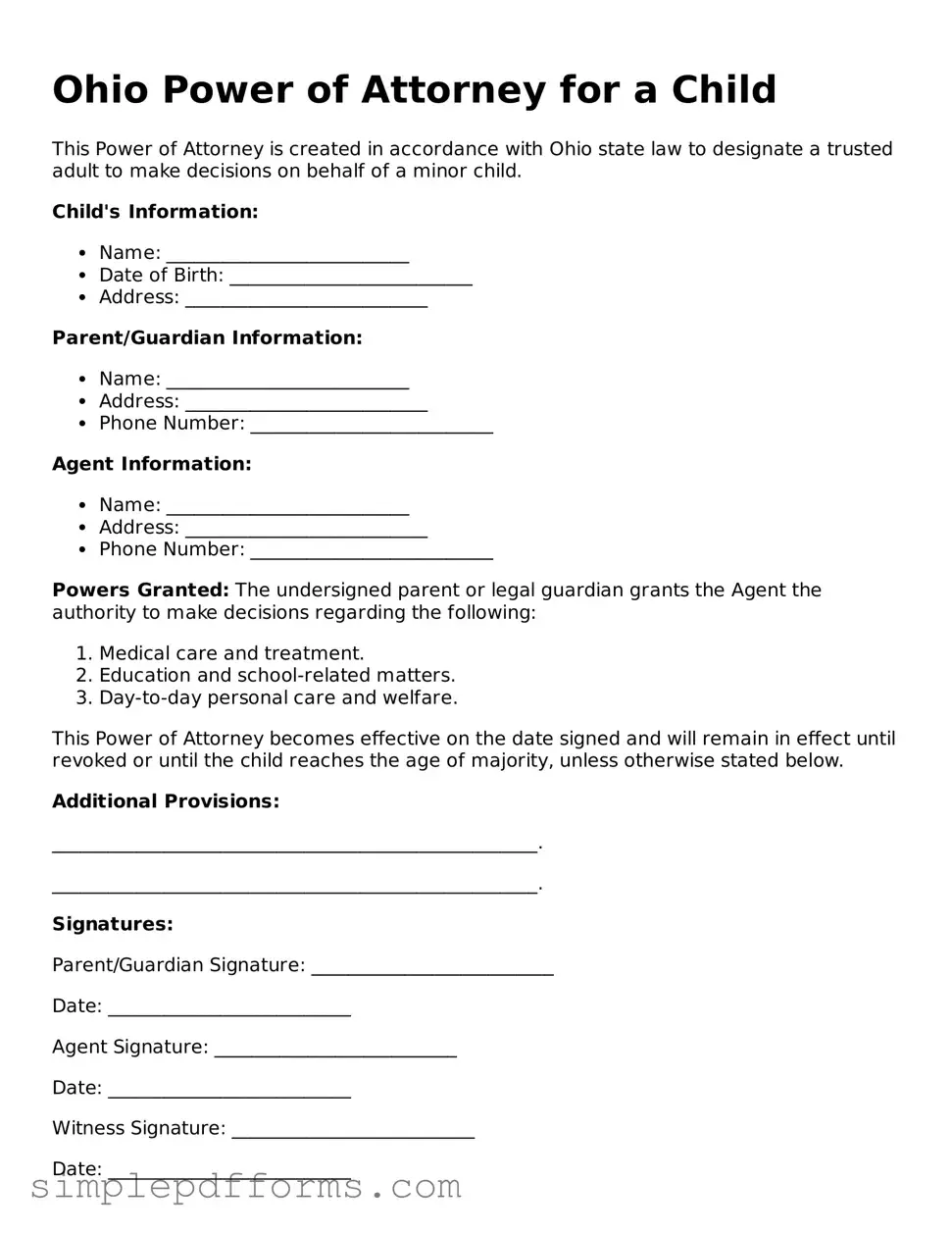Ohio Power of Attorney for a Child
This Power of Attorney is created in accordance with Ohio state law to designate a trusted adult to make decisions on behalf of a minor child.
Child's Information:
- Name: __________________________
- Date of Birth: __________________________
- Address: __________________________
Parent/Guardian Information:
- Name: __________________________
- Address: __________________________
- Phone Number: __________________________
Agent Information:
- Name: __________________________
- Address: __________________________
- Phone Number: __________________________
Powers Granted: The undersigned parent or legal guardian grants the Agent the authority to make decisions regarding the following:
- Medical care and treatment.
- Education and school-related matters.
- Day-to-day personal care and welfare.
This Power of Attorney becomes effective on the date signed and will remain in effect until revoked or until the child reaches the age of majority, unless otherwise stated below.
Additional Provisions:
____________________________________________________.
____________________________________________________.
Signatures:
Parent/Guardian Signature: __________________________
Date: __________________________
Agent Signature: __________________________
Date: __________________________
Witness Signature: __________________________
Date: __________________________
